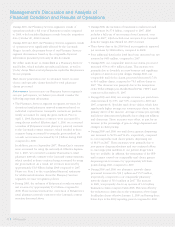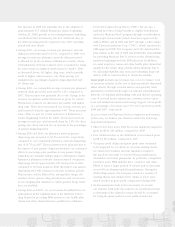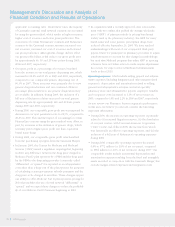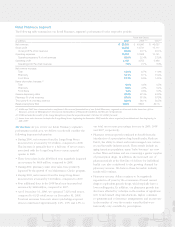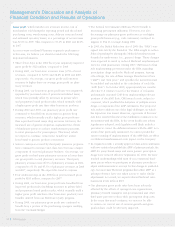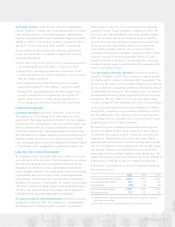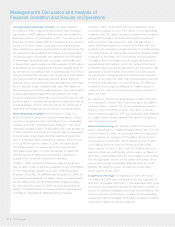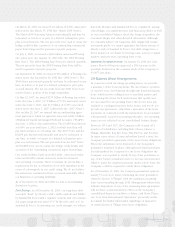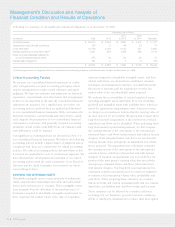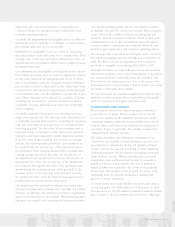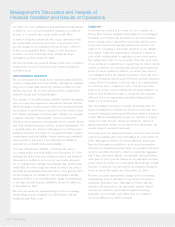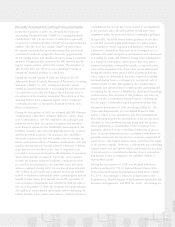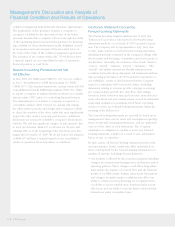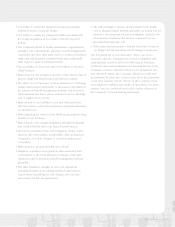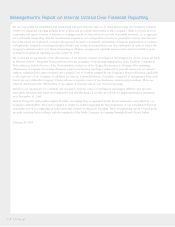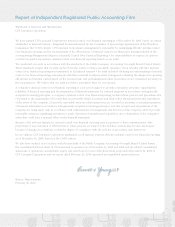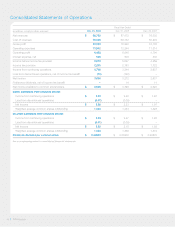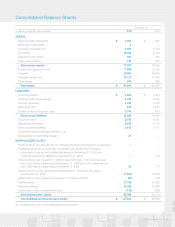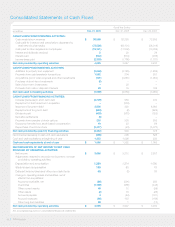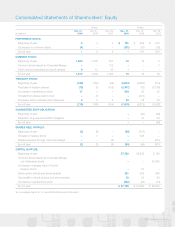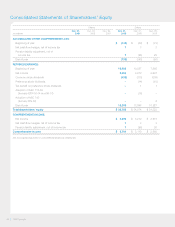CVS 2009 Annual Report Download - page 42
Download and view the complete annual report
Please find page 42 of the 2009 CVS annual report below. You can navigate through the pages in the report by either clicking on the pages listed below, or by using the keyword search tool below to find specific information within the annual report.
Management’s Discussion and Analysis of
Financial Condition and Results of Operations
INVENTORY
Our inventory is stated at the lower of cost or market on a
first-in, first-out basis using the retail method of accounting to
determine cost of sales and inventory in our CVS/pharmacy
stores, average cost to determine cost of sales and inventory
in our mail service and specialty pharmacies and the cost
method of accounting to determine inventory in our distribu-
tion centers. Under the retail method, inventory is stated at
cost, which is determined by applying a cost-to-retail ratio to
the ending retail value of our inventory. Since the retail value
of our inventory is adjusted on a regular basis to reflect current
market conditions, our carrying value should approximate the
lower of cost or market. In addition, we reduce the value of
our ending inventory for estimated inventory losses that have
occurred during the interim period between physical inventory
counts. Physical inventory counts are taken on a regular basis
in each store and a continuous cycle count process is the
primary procedure used to validate the inventory balances on
hand in each distribution center to ensure that the amounts
reflected in the accompanying consolidated financial state-
ments are properly stated.
The accounting for inventory contains uncertainty since we
must use judgment to estimate the inventory losses that have
occurred during the interim period between physical inventory
counts. When estimating these losses, we consider a number
of factors, which include, but are not limited to, historical
physical inventory results on a location-by-location basis and
current physical inventory loss trends.
Our total reserve for estimated inventory losses covered by this
critical accounting policy was $132 million as of December 31,
2009. Although we believe we have sufficient current and
historical information available to us to record reasonable
estimates for estimated inventory losses, it is possible that actual
results could differ. In order to help you assess the aggregate
risk, if any, associated with the uncertainties discussed above,
a ten percent (10%) pre-tax change in our estimated inventory
losses, which we believe is a reasonably likely change, would
increase or decrease our total reserve for estimated inventory
losses by about $13 million as of December 31, 2009.
We have not made any material changes in the accounting
methodology used to establish our inventory loss reserves
during the past three years. Although we believe that the
estimates discussed above are reasonable and the related
calculations conform to generally accepted accounting
principles, actual results could differ from our estimates,
and such differences could be material.
we believe we have sufficient current and historical information
available to us to record reasonable estimates for sublease
income, it is possible that actual results could differ.
In order to help you assess the risk, if any, associated with
the uncertainties discussed previously, a ten percent (10%)
pre-tax change in our estimated sublease income, which we
believe is a reasonably likely change, would increase or
decrease our total closed store lease liability by about
$33 million as of December 31, 2009.
We have not made any material changes in the reserve method-
ology used to record closed store lease reserves during the
past three years.
SELF-INSURANCE LIABILITIES
We are self-insured for certain losses related to general liability,
workers’ compensation and auto liability, although we maintain
stop loss coverage with third-party insurers to limit our total
liability exposure. We are also self-insured for certain losses
related to health and medical liabilities.
The estimate of our self-insurance liability contains uncertainty
since we must use judgment to estimate the ultimate cost that
will be incurred to settle reported claims and unreported claims
for incidents incurred but not reported as of the balance sheet
date. When estimating our self-insurance liability, we consider
a number of factors, which include, but are not limited to,
historical claim experience, demographic factors, severity factors
and other standard insurance industry actuarial assumptions. On
a quarterly basis, we review to determine if our self-insurance
liability is adequate as it relates to our general liability, workers’
compensation and auto liability. Similar reviews are conducted
semi-annually to determine if our self-insurance liability is
adequate for our health and medical liability.
Our total self-insurance liability covered by this critical
accounting policy was $449 million as of December 31, 2009.
Although we believe we have sufficient current and historical
information available to us to record reasonable estimates
for our self-insurance liability, it is possible that actual results
could differ. In order to help you assess the risk, if any, associ-
ated with the uncertainties discussed above, a ten percent (10%)
pre-tax change in our estimate for our self-insurance liability,
which we believe is a reasonably likely change, would increase
or decrease our self-insurance liability by about $45 million as
of December 31, 2009.
We have not made any material changes in the accounting
methodology used to establish our self-insurance liability
during the past three years.
CVS Caremark
38


